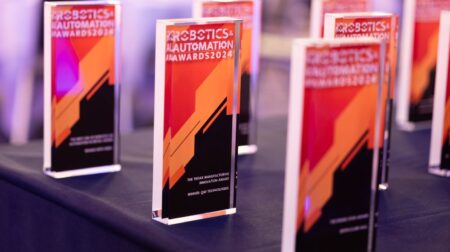A new rechargeable zinc battery integrated into the structure of a robot could provide up to 72-times more energy than current lithium batteries, according to researchers from the University of Michigan.
In a similar fashion to how biological fat reserves store energy in animals, the zinc batteries can serve as both the structure and the power supply for robots. Such a system will be particularly important as robots shrink to the microscale and below – scales at which current standalone batteries are too big and inefficient, the researchers said.
“Robot designs are restricted by the need for batteries that often occupy 20% or more of the available space inside a robot, or account for a similar proportion of the robot’s weight,” said Professor Nicholas Kotov, who led the research.
“No other structural battery reported is comparable, in terms of energy density, to today’s state-of-the-art advanced lithium batteries. We improved our prior version of structural zinc batteries on 10 different measures, some of which are 100 times better, to make it happen.”
Kotov added that he believes the combination of energy density and inexpensive materials means that the battery may already double the range of delivery robots for example.
The new battery works by passing hydroxide ions between a zinc electrode and the air side through an electrolyte membrane. The membrane is partly a network of aramid nanofibres – carbon-based fibres found in Kevlar vests – and a new water-based polymer gel. The gel helps shuttle the hydroxide ions between the electrodes.
Made with cheap, abundant and largely non-toxic materials, the battery is reportedly more environmentally-friendly than those currently in use and the gel and aramid nanofibres will not catch fire if the battery is damaged, unlike the flammable electrolyte in lithium-ion batteries.
To demonstrate their batteries, the researchers experimented with regular-sized and miniaturised toy robots in the shape of a worm and a scorpion. The team replaced their original batteries with zinc-air cells then wired the cells into the motors and wrapped them around the outsides of the toys.
“Batteries that can do double duty – to store charge and protect the robot’s ‘organs’ – replicate the multi-functionality of fat tissues serving to store energy in living creatures,” said doctoral student Ahmet Emre.
The researchers estimate that robots could hold 72 times more power if their exteriors were replaced with zinc batteries, instead of using a single lithium-ion battery. However, zinc batteries can currently only maintain high capacity for about 100 cycles, rather than the 500 or more from lithium-ion batteries in smartphones.
According to Kotov, the “strong aramid nanofibre network between the electrodes is the key to the relatively long cycle life for a zinc battery. And the inexpensive and recyclable materials make the batteries easy to replace”.
Beyond the advantages of the battery’s chemistry, Kotov says that the design could enable a shift from a single battery to distributed energy storage, using a graph theory approach developed at U-M.
“We don’t have a single sac of fat, which would be bulky and require a lot of costly energy transfer,” Kotov said. “Distributed energy storage, which is the biological way, is the way to go for highly efficient biomorphic devices.”
The research is funded by the US Department of Defense, the US National Science Foundation and the US Air Force Office of Scientific Research. Battery testing took place at the U-M Energy Institute.
The University of Michigan has applied for patent protection and is seeking commercial partners to bring the technology to market.







